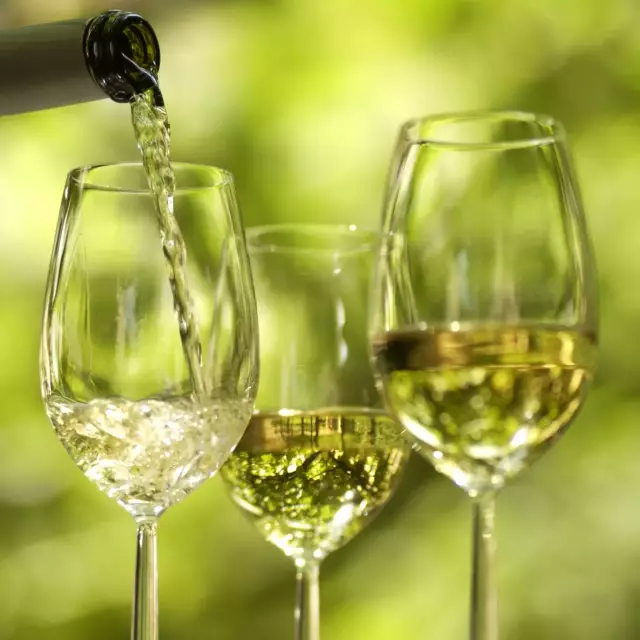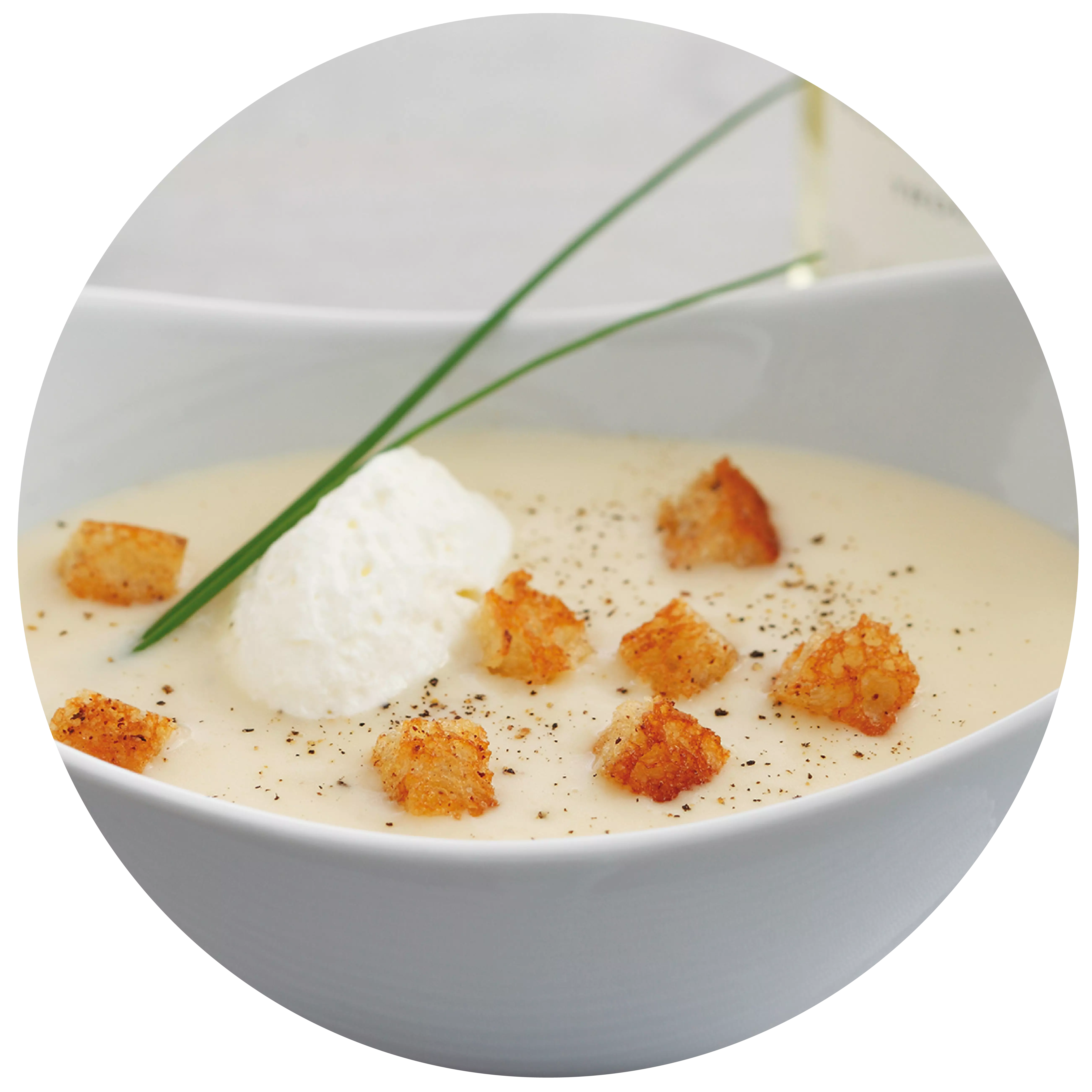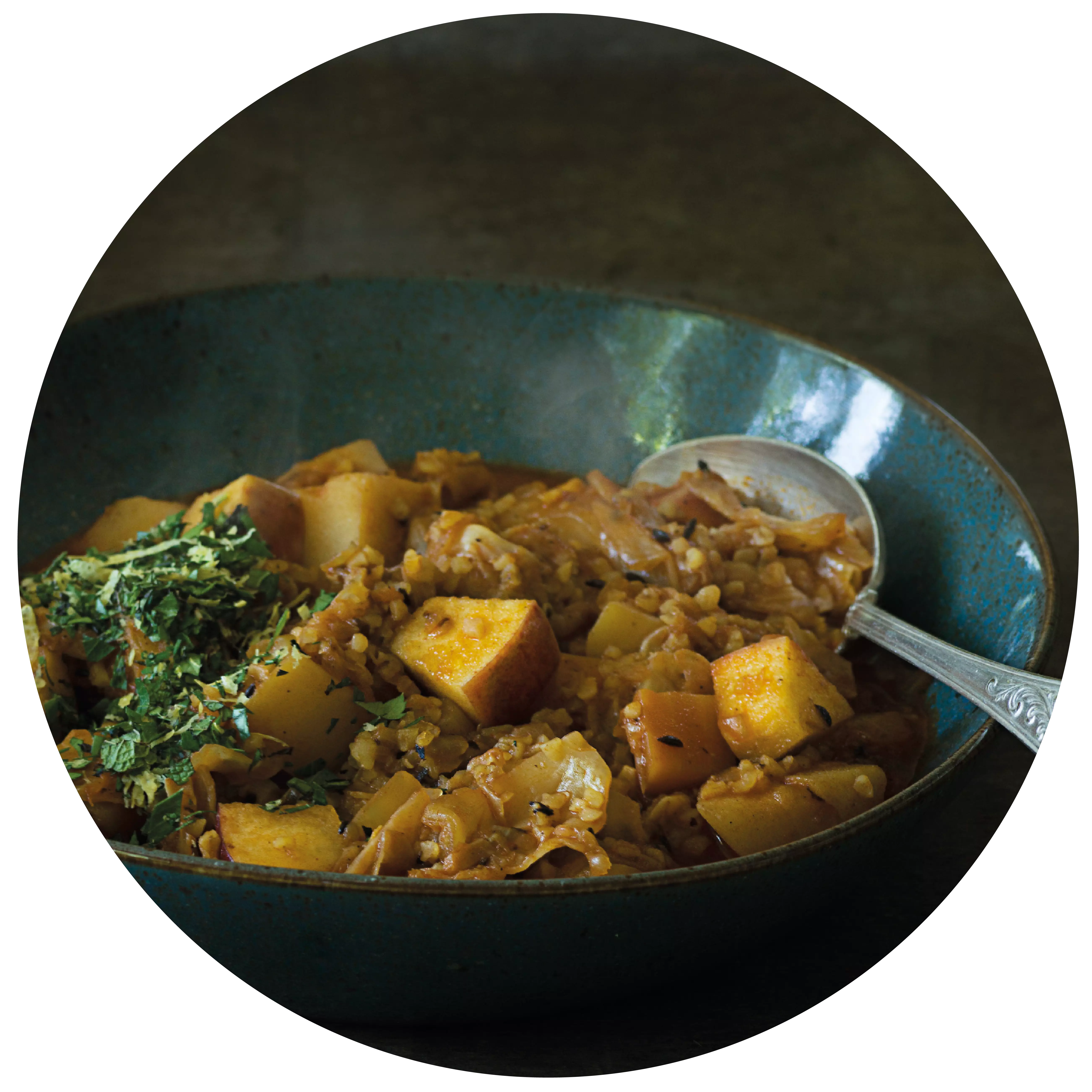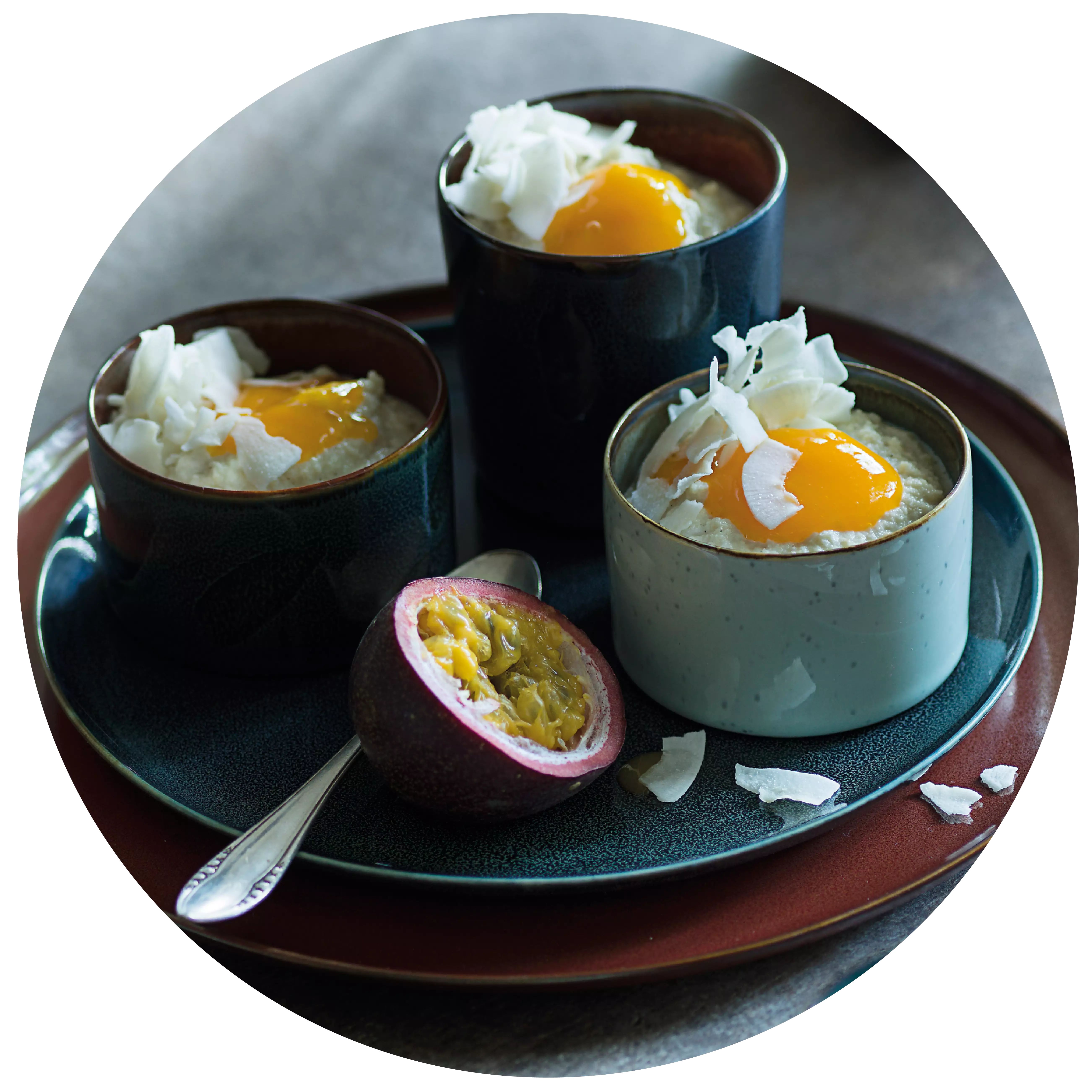Blanc de Noir

"White from black" - this is the literal translation of "Blanc de Noir" and stands for a white wine made from dark blue to black grapes.
Facts
-
100 %
red grapes
-
2021
was "Blanc de Noir" redefined in terms of wine law
As the name suggests, this form of winemaking has its origins in France, where the red grapes of Pinot Noir (Spätburgunder) and Pinot Meunier (Schwarzriesling) have always been processed into white wines as the basis for champagne.
This is possible because red berries generally have light flesh. The red pigment, the so-called anthocyanins, are mainly present in the berry skins. If the juice from red grapes is to remain white, no colourants from the skins may pass into the must. It is therefore important that the red grapes, which are as healthy as possible, are only pressed gently. The light colored must obtained is then fermented to a white wine. A typical Blanc de Noir has a light color and can sometimes have hints of yellow-gold.
If the cellar master leaves the squeezed red berries in the pressed juice for a little longer - the experts then speak of a longer "maceration time" – this is when a little more color passes from the skins into the must and a rosé develops.
In terms of wine law
After the 10th law amending the Wine Act came into force in January 2021, according to the new Wine Ordinance the designation "Blanc de Noir" or "Blanc de Noirs" may only be used for domestic wine, sparkling wine, quality sparkling wine or semi-sparkling wine if it is a product with a protected designation of origin (PDO) is made from fresh red wine grapes like a white wine and has the typical color of white wine.
Why Blanc de Noir?
The white wines obtained from the red grapes are characterized by their distinctive fruit aromas, pleasant freshness and moderate acidity. They combine the full flavor of a red wine with the fruitiness of a white wine and thus display the characteristics of both types. Blanc de Noirs are excellent food companions that go well with a wide range of dishes.
Flexibility and positive side effects
For winemakers who mainly cultivate red grape varieties, the production of Blanc de Noirs is also an opportunity to react flexibly to the increasing demand for white wine. On the other hand, there is a positive side effect for the production of red wine: if the light-colored must for a Blanc de Noir is removed before the maceration, the ratio of the color and tannin-containing skins to the remaining pressed juice in the mash changes. As a result, winemakers and wine lovers can enjoy more complex and color-intensive red wines.
How is Blanc de Noir defined under wine law in Germany?
According to the Wine Law, the name "Blanc de Noir" or "Blanc de Noirs" may only be used if it is a product with a protected designation of origin (PDO), pressed from fresh red grapes like a white wine and with the color typical of white wine.
Varietals

the classic with a difference Franconian cider soup
the classic with a difference
- 500 ml Weißwein (Spätlese)
- 500 ml Geflügelbrühe
- 350 ml Sahne
- 30 Gramm Zwiebeln
- 30 Gramm Weißes vom Lauch
- 30 Gramm Sellerie
- 30 Gramm Karotten
- 30 Gramm Butter
- 180 Gramm Mehl
- 2 Lorbeerblätter
- 1 EL Butterschmalz
- 4 Scheiben Weißbrot
- Nach Belieben Zucker, Muskat, Zimt, Salz
Sauté the vegetables in butter until lightly browned, dust with flour and then add the vegetable stock, wine and 250 ml cream. Add the spices and simmer for approx. 15 minutes.
Remove the crusts from the slices of white bread and cut into 1 cm cubes. Fry in hot clarified butter until golden brown and season with cinnamon, whip the remaining cream until stiff.
<p
<p> Strain the soup and flavour with nutmeg and salt.
Pour into deep plates, garnish with whipped cream and the cinnamon crusts.
- Müller-Thurgau (trocken)
- Silvaner (trocken)

with bulgur Cabbage stew
with bulgur
- 200 Gramm Zwiebeln
- 1 ganze Knoblauchzehe
- 800 Gramm Spitzkohl
- 200 Gramm Möhren
- 400 Gramm festk. Kartoffeln
- 1 EL Kümmelsaat
- 1,5 Liter Gemüsefond
- 5 EL Olivenöl
- 2 EL Tomatenmark
- 2 EL edelsüßes Paprikapulver
- 3 TL Honig
- nach Belieben Salz & Pfeffer
- 120 Gramm grobe Bulgur
- 1 Bund Petersilie
- 4 Stiele Minze
- 1 ganze Zitrone
- 2 ganze Äpfel
- 3 EL Obstessig
Finely dice the onions and garlic. Clean, wash and quarter the cabbage, remove the stalk and roughly chop the cabbage quarters. Peel the carrots, halve lengthways and cut into approx. 2 cm wide pieces. Peel the potatoes and cut into approx. 2.5 cm pieces. Fry the carrots in a pan without fat and set aside.
Heat the vegetable stock in a small pan. Heat 3 tablespoons of oil in a large pan, sauté the cabbage in it for 10-15 minutes over a high heat until dark brown and remove from the pan.
Add the remaining oil to the pan. Fry the onions and garlic until translucent. Add the potatoes and muesli and sauté for 3-4 minutes, stirring constantly. Add the tomato purée and paprika powder and fry while stirring. Add the cabbage, honey and caraway and pour in the hot vegetable stock. Season with salt and pepper. Bring to the boil, cover and simmer for 45 minutes. Add the bulgur 20 minutes before the end of the cooking time.
Quarter the apples, remove the seeds, cut into approx. 1 cm cubes and add 10 minutes before the end of the cooking time. Pluck the herbs and chop medium-fine. Wash and dry the lemon, finely grate the zest and mix with the herbs. Flavour the stew with vinegar, salt and pepper and serve sprinkled with the herbs.
Tip: The pointed cabbage must be roasted really strongly and dark so that the aromas come out well.
- Spätburgunder / Pinot Noir (trocken)
- Trollinger (trocken)

Light and fluffy: cashew coconut mousse with passion fruit Cashew coconut mousse with passion fruit
An airy cashew coconut mousse with passion fruit
- 400g Cashewkerne
- 400ml Haferdrink
- 6EL Agavendicksaft
- 6EL Kokosflocken
- 4 Passionsfrüchte
- 1 Prise Vanille
Place the cashews in a container and add enough water to cover the cashews sufficiently. Place the cashews in the fridge to soak overnight.
(With a high-performance blender, 3-4 hours is also sufficient.)
Drain the water and place the cashews in the blender with the oat milk, agave syrup and coconut flakes. Add the vanilla and blend until the mousse is creamy and no longer contains any chunks.
<p
<p>Divide the mousse between four glasses. Halve the passion fruit, scrape out the flesh with a teaspoon and place on top of the mousse. Decorate with coconut flakes.
- Pinot Blanc (süß & edelsüß)
- Riesling (süß & edelsüß)

to sweet selections Apple doughnuts with vanilla sauce
to sweet selections
- 5 große, säuerliche Äpfel
- 200 Gramm Mehl
- 2 Eier
- 250 ml Milch
- 2 EL Rum
- Nach Bedarf Schmalz oder Öl
- Nach Belieben Zimt, Zucker, Salz
Peel the apples and remove the core, cut into finger-thick, even slices. Drizzle with rum and sugar. Leave to infuse.
Stir the batter, it should be quite thick. Turn the apple rings in it and bake floating in hot fat until golden brown.
<p
<p>Drain on kitchen paper and serve hot with cinnamon and sugar.
- Riesling (süß & edelsüß)
- Scheurebe (süß & edelsüß)

Teaser
Events
-
Show
winetasting in our winery - cheese & wine
Mainz-Hechtsheim




